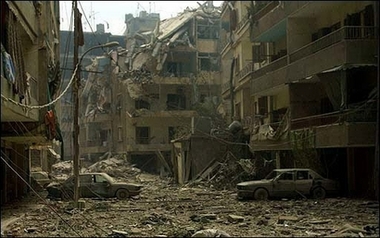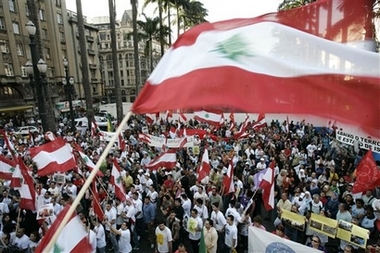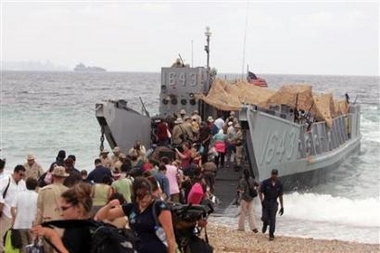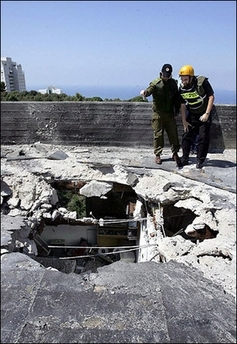DAY10, AP, 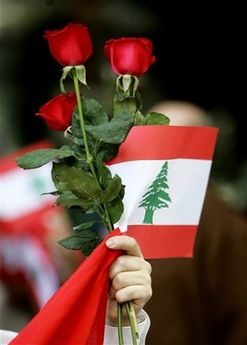 Israel massed tanks and troops on the border Friday hours after calling up reserves and confirmed some units were already operating in Lebanon, as the army announced plans for a ground operation to destroy Hezbollah’s tunnels, hideouts and weapons stashes. With Hezbollah’s rocket attacks and Israeli bombings undiminished, Secretary of State Condoleezza Rice said she would visit the Middle East beginning Sunday – her first trip to the region since the crisis erupted 10 days ago. But she ruled out a quick cease-fire between Israel and the Shiite guerrillas as a "false promise."
Israel massed tanks and troops on the border Friday hours after calling up reserves and confirmed some units were already operating in Lebanon, as the army announced plans for a ground operation to destroy Hezbollah’s tunnels, hideouts and weapons stashes. With Hezbollah’s rocket attacks and Israeli bombings undiminished, Secretary of State Condoleezza Rice said she would visit the Middle East beginning Sunday – her first trip to the region since the crisis erupted 10 days ago. But she ruled out a quick cease-fire between Israel and the Shiite guerrillas as a "false promise."
Israel, which pulled its troops out of Lebanon just six years ago after a lengthy and costly occupation that caused painful divisions within the Jewish state, was poised to carry out its third large-scale ground operation in Lebanon since 1978. This time, however, the Israelis signaled they did not want to stay long. Israel hopes the operation will end in the neutralization of Hezbollah. But the operation carries great risks for the country and the region. If Lebanon’s weak central government is undermined, it could immerse the country again into disorder and ignite fresh passions in many Arab countries against Israel and the United States. To view more pictures pls click "READ MORE" or to view pictures from previous days pls click "news archive"
This picture shows a destroyed residential building in one of Beirut’s southern suburbs, a stronghold of the Lebanese Shiite militant group Hezbollah. US Secretary of State Condoleezza Rice leaves Sunday to spearhead international Lebanon crisis talks, as diplomatic efforts pick up speed, 10 days into Israel ‘s offensive against Hezbollah.(AFP/Layal Najib)
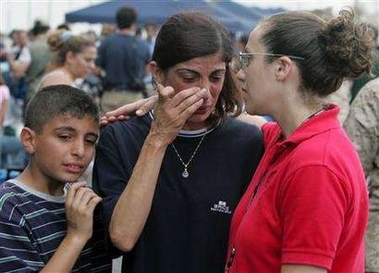
U.S. nationals, helped by Lebanese policemen, evacuate on a U.S. Navy vessel from Beirut to Cyprus at Marina Debayeh, in the north of Beirut, July 21, 2006. (Adnan Hajj/Reuters)
A destroyed residential building in one of Beirut’s southern suburbs. Israel was amassing thousands more reservists on the Lebanese border to stage ground incursions aimed at destroying Hezbollah positions, warning it would not rule out a full-scale invasion despite mounting calls for a ceasefire.(AFP/Layal Najib)
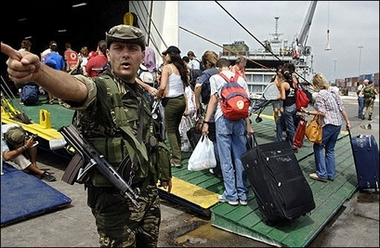
A Lebanese soldier directs the evacuation of the people fleeing Lebanon in a ferry charted by the French government at Beirut’s port. Thousands of foreigners huddled in makeshift transit centres, weary but relieved, as governments around the world ramped up a mass evacuation from the raging conflict in Lebanon.(AFP/Eric Feferberg)

People carry a large Lebanese flag during a demonstration against Israel ‘s bombings, Sao Paulo, Brazil, on Friday, July 21, 2006. (AP Photo/Victor R. Caivano)
This picture shows a destroyed residential building in one of Beirut’s southern suburbs, a stronghold of the Lebanese Shiite militant group Hezbollah. US Secretary of State Condoleezza Rice leaves Sunday to spearhead international Lebanon crisis talks, as diplomatic efforts pick up speed, 10 days into Israel ‘s offensive against Hezbollah.(AFP/Layal Najib)
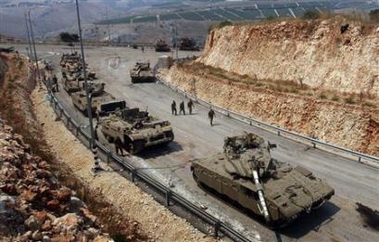
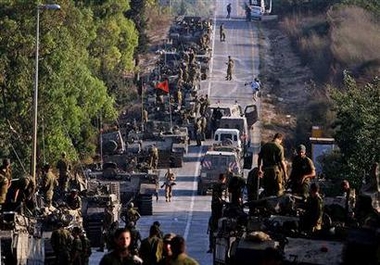
Israel’s goal is not to create a buffer zone as it did during its occupation of southern Lebanon from 1982 to 2000, said a senior military official, speaking on condition of anonymity because of the topic’s military sensitivity.
Rather, Israel wants to weaken Hezbollah with a limited ground operation to make it easier for the Lebanese army to move into areas previously controlled by the guerrillas, possibly with the aid of a beefed-up international peacekeeping force, the official said.
On Friday, Israel knocked out a key bridge on the road to Syria and pummeled Hezbollah positions in the south as long lines of tanks and armored personnel carriers lined up at the border – in some places close enough to see Lebanese homes on the other side.
A barrage of 11 Hezbollah rockets rained down again on Israel’s third-largest city, the northern port of Haifa, wounding at least five people, two seriously. The army said rockets also hit Rosh Pina, Safed and communities near the Sea of Galilee.
Hezbollah has fired hundreds of rockets at northern Israeli towns from north of the Lebanese border, killing 16 civilians and forcing hundreds of thousands of Israelis to flee repeatedly into bunkers.
Rice plans meetings in Jerusalem and the West Bank with Israeli Prime Minister Ehud Olmert and Palestinian President Mahmoud Abbas, as well as sessions in Rome with representatives of European and moderate Arab governments that are meant to shore up the weak democratic government in Lebanon’s capital, Beirut.
"We do seek an end to the current violence, we seek it urgently. We also seek to address the root causes of that violence," Rice said – a reference to the U.S. position that Hezbollah must not be allowed to rule southern Lebanon with impunity. The group’s capture of two Israeli soldiers in a bloody cross-border raid on July 12 touched off Israel’s heaviest bombardment of Lebanon in 24 years.
In south Lebanon, soldiers buried 72 people killed in recent bombings in a mass grave just outside a barracks in the city of Tyre. Volunteers put the bodies, many of them children, in wooden coffins and spray-painted the names of the dead on the lids.
Ships lined up at Beirut’s port as a massive evacuation effort to pull out Americans and other foreigners picked up speed. U.S. officials said more than 8,000 of the roughly 25,000 Americans in Lebanon would be evacuated by the weekend.
France, the United Nations and Red Cross painted a dire portrait of life for civilians trapped in the south or forced to flee their homes there. They demanded Israel open humanitarian corridors to allow life’s necessities – shelter, food, water and medicine – to reach the swelling numbers of displaced people – an estimated half-million.
At the United Nations, Israeli Ambassador Dan Gillerman said he expected a humanitarian corridor for food, medicine and other supplies to be opened later Friday or Saturday.
Responding to a U.S. request, Israeli Defense Minister Amir Peretz said French aid would be allowed into Lebanon’s port of Sidon.
U.N. humanitarian chief Jan Egeland told the U.N. Security Council that "it is estimated that Beirut only has days of fuel supplies remaining."
The Lebanese health ministry reported 362 deaths in Lebanon so far in the onslaught, an increase of 55 since it released figures on Thursday. Thirty-four Israelis also have been killed, including 18 soldiers and an air force officer killed Friday in the collision of two helicopters.
Al-Arabiyah television reported that Israeli troops found the body of a fellow soldier in south Lebanon who was killed in clashes the day before in which four other soldiers died.
The count of 362 includes six Hezbollah fighters that the group has confirmed were killed, including three who died Friday. Israel’s army chief of staff said Friday that nearly 100 Hezbollah guerrillas have been killed in the offensive in Lebanon.
The Lebanese toll was expected to rise with heavy Israeli strikes on Friday in Shiite regions of the country’s south and east. In the southern towns of Nabatiyeh and Aytaroun, buildings were leveled – including one on a commercial street – killing at least one person. But rescue crews were too afraid of the continuing waves of strikes to search for more dead or wounded trapped in the rubble.
Israel warplanes also continued their bombing to cut off roads, collapsing part of a suspension bridge linking two mountain peaks on the Beirut-Damascus highway in central Lebanon, which has already been heavily hit.
Three U.N.-run positions near the border were struck. One post on the Israeli side was hit and severely damaged, though the Ghanian troops inside were safely in shelters. A U.N. officer said it was hit by an Israeli artillery shell, but Israel said Hezbollah rockets struck it.
Two more U.N. positions on the Lebanese side took direct hits from Israeli artillery, also causing damage but no casualties, the U.N. observer force said.
Beirut was swelling with refugees from the south as well as from its own Shiite southern neighborhoods, heavily hit by Israeli strikes. They piled up by the hundreds in parks and schools, those with enough money staying in hotels.
But after 10 days, Beirutis – enured by past wars – were emerging increasingly from their homes, fed up with staying indoors even as the conflict looked ready to escalate. More shops on downtown Hamra Street were open, and in the evening families, including many southern refugees, were strolling along the seafront, kids roller-blading, young men smoking water-pipes.
Israel’s army chief of staff, Lt. Gen. Dan Halutz, said the military would conduct "limited ground operations as much as needed in order to harm the terror that harms us" – leaving it unclear how deep and how powerful the Israeli punch into Lebanon would be. Israel on Friday called up several thousand reservists to free up regular troops for duty in the north.
"We will fight terror wherever it is because if we do not fight it, it will fight us. If we don’t reach it, it will reach us," he told a nationally televised news conference.
But the time Israel has to achieve its goals could be limited by mounting civilian casualties, as international tolerance for the bloodshed and destruction runs out.
Associated Press Writers Lee Keath in Beirut, Steven Gutkin in Jerusalem, Edith M. Lederer at the United Nations, Anne Gearan in Washington and Gabe Ross in Haifa, Israel, contributed to this story.
Copyright 2006 Associated Press. All rights reserved. This material may not be published broadcast, rewritten, or redistributed
